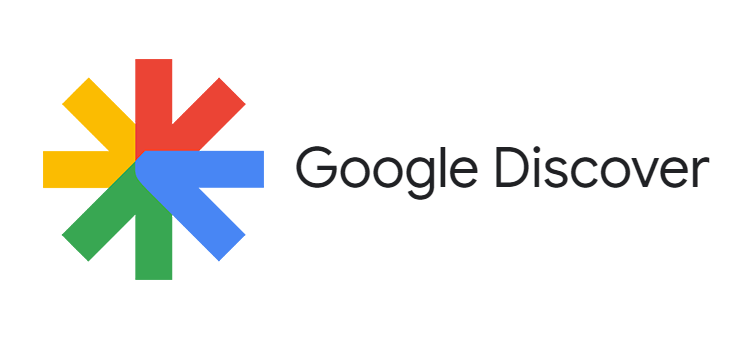
Furkan Çerkovanlı
Feb 26, 2024Google Discover: More to Discover

Today, Google is one of the most preferred search engine bots. According to recent data, Google's usage rate worldwide is around 93.07%. The main reasons behind this popularity are its constant improvement, prioritization of user experience, and the ability to offer advanced data to website owners through free tools like Analytics, Tag Manager, Search Console, Looker Studio, etc. Although other search engines also provide similar tools (like Yandex Metrica), Google has not yielded its leadership flag to any competitor for years.
One more service that Google has developed to improve itself and provide user-focused results is Google Discover! In this blog post, we’ll explain what Google Discover is and what you need to do to be featured in it. Enjoy your reading.
What is Google Discover?
Google Discover is a free service launched in September 2018 that offers user-focused search results. It presents useful, new, and up-to-date content based on a user's interests. The content shown is determined by the websites you visit, the news you click on, how long you stay on a page, and even your scroll behavior.
Google’s goal with Discover is to allow users to access information from reliable sources on topics of interest without constantly needing to search in SERP.
For example, let’s say you’re highly interested in computer games and constantly follow sales in that area. You spend time on sites like Steam and Epic Games or browse news sites that share game-related content. If Google Discover understands you're interested in "discounts" or "free games," it will directly show news from gaming sites in Discover, saving you from navigating the SERPs. This offers you a deeper and more personalized search experience.

Why is Google Discover Important?
Google Discover has significantly impacted SERP experience and search results. We can summarize its importance as follows:
- Personalized User Experience: Google Discover offers personalized content based on users’ interests and past behaviors even before they search. This helps users reach more relevant and valuable content faster.
- Increased User Loyalty: Discover consistently presents users with engaging and relevant content, increasing loyalty as users return regularly for updates. Like Instagram’s or TikTok’s explore page, it encourages discovery and reading.
- Organic Traffic Growth: Being featured in Google Discover can increase organic traffic. With the right optimization and content strategy, your website can appear frequently in Discover, boosting your visitor numbers.
- Brand Awareness and Promotion: Discover enables brands and content providers to reach broader audiences. If your content is high-quality and engaging, your brand visibility will increase, along with your chances of reaching new users.
- Trend Monitoring and Quick Reaction: Google Discover allows for rapid monitoring of current and trending topics, enabling content creators to quickly adapt and produce relevant content.
- Optimized for Mobile Users: Discover is optimized for mobile use. It offers a better experience for mobile users and focuses on fast loading times.
- Enhancing SEO Strategies: Discover is not just about traditional search results but also includes interest-based content, providing opportunities to expand and diversify SEO strategies.
Can Google Discover Increase Our Traffic?
Yes, Google Discover directly affects your Search Console data. The impressions and clicks gained through this channel count as organic. We can say that Google Discover is highly beneficial and necessary for SEO strategies.
Moreover, traffic from Discover is highly valuable because it’s based on the user’s interest, not a spontaneous search. This can help users become familiar with your site, increase brand awareness, and eventually lead them to return directly via “Direct” traffic. In short, we can say that Discover traffic tends to be more conversion-focused and fosters customer loyalty.
What Should Be Done to Be Featured in Google Discover?
We’ve understood what Google Discover is and why it matters. We know it affects both our traffic and customer loyalty. But what do we need to do to be included in Google Discover?
You can access Google’s official article on the topic here. In summary, here are the key points to focus on to be featured in Discover:
- Use original, descriptive titles that represent the content accurately and avoid clickbait.
- Your images must be engaging. Do not include your logo in them.
- Your images must be high-quality. Use large images—at least 1200px wide—with the setting max-image-preview:large or use AMP.
- Avoid topics related to erotica, gambling, or content that promotes anger. These can prevent your inclusion in Discover for a long time. This applies not only to text but also to visuals and videos.
- Including explanatory images and videos can help show your content is valuable and informative.
Is Google Discover Only for News Outlets (Sites Registered as News)?
Google Discover often features news sites, but the answer is no—it is not exclusive to registered news outlets or news sites. Blogs and websites on various topics and interests can also appear here. The important thing is meeting Google’s content criteria.
News websites often appear more frequently because they can publish timely content across various topics. However, being registered as a news site is not a required metric to appear in Discover.
Where Can We See Google Discover Data in Search Console?
As mentioned earlier, traffic from Google Discover counts as organic. Therefore, the impressions and clicks gained from this area can be seen in Google Search Console.

You can quickly access the impressions and clicks obtained from Discover through the left sidebar in Search Console. In the Performance section, right below Search Results, you’ll find the Discover tab. By clicking it, you can see the date ranges you were featured, which pages appeared, and which countries your traffic came from.
More resources

5 Ways to Accurately Measure Sales Impact with Google MMM
Google MMM (Marketing Mix Modeling) is one of the most powerful statistical methods for understandin...

ChatGPT Shopping Research: An AI-Powered Shopping Assistant
ChatGPT Shopping Research is an AI-powered shopping assistant that accelerates users' shopping resea...

Data-Driven Tactics to Build Customer Loyalty After Black Friday
Customer loyalty is the most valuable outcome of the Black Friday period, as short-term traffic and...

